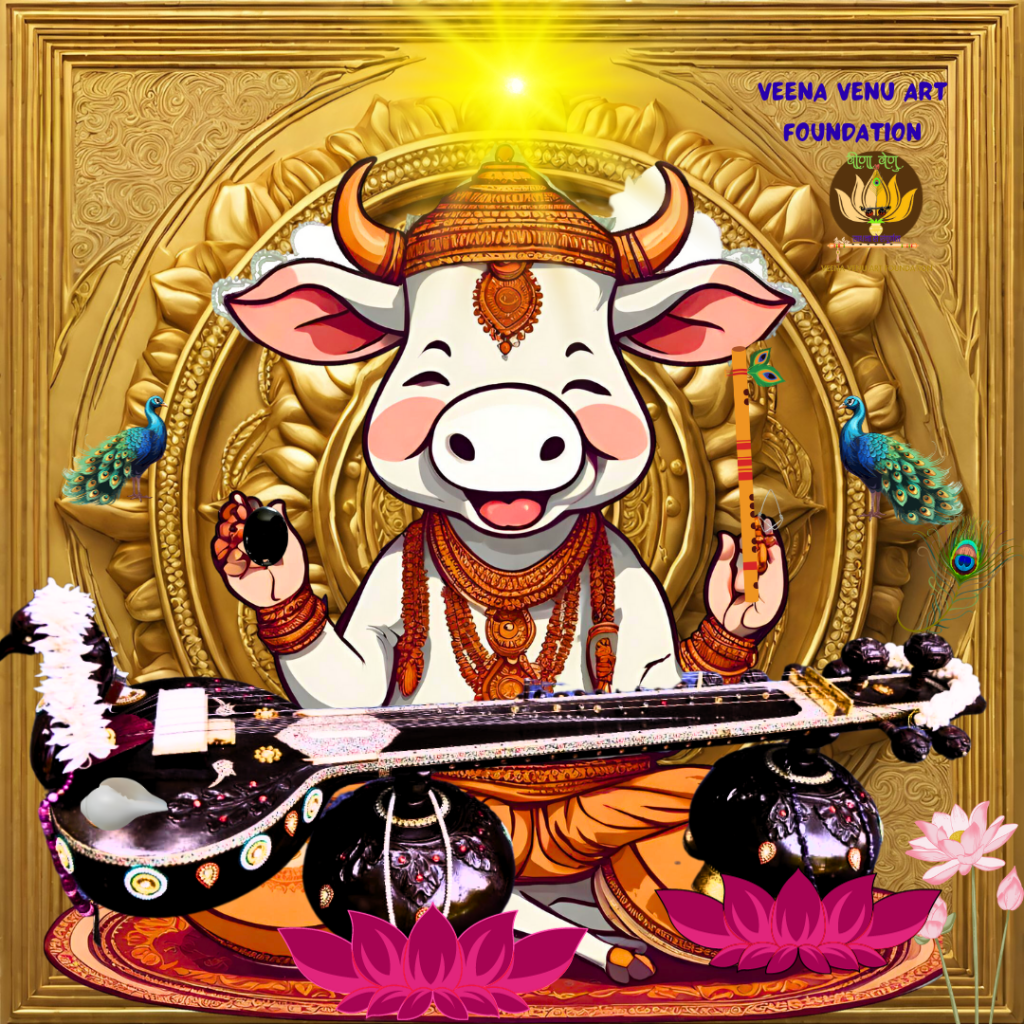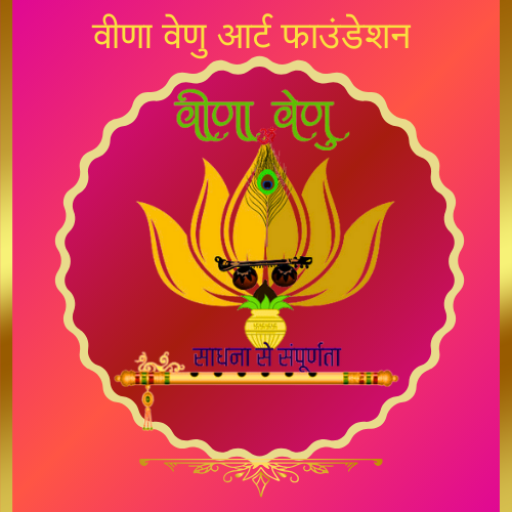 The Pavitra Gaay :mascot of the Veena Venu Art Foundation, is a symbol that embodies a profound and multifaceted representation of wisdom, knowledge, dedication, and the abundance of musical heritage. This mascot stands as a living testament to the rich musical legacy of India, passed down through generations.
The Pavitra Gaay :mascot of the Veena Venu Art Foundation, is a symbol that embodies a profound and multifaceted representation of wisdom, knowledge, dedication, and the abundance of musical heritage. This mascot stands as a living testament to the rich musical legacy of India, passed down through generations.
Central to the symbolism of this mascot is the Vichitra Veena, one of the most ancient musical instruments of India. The Vichitra Veena is not only a testament to the country’s musical legacy but also a representation of the continued tradition that has been passed down through generations. It serves as a reminder of the roots of Indian music and the profound influence it has on the world’s musical culture.
The Pavitra Gaay is also an ode to the divine, featuring depictions of goddess Shakti, the ultimate power, and the goddess of creation. It further showcases the Shiva Linga, representing Shiva, the lord of time and Mahakal. This dual representation underscores the deep spiritual and cosmic connection between music and the universe. Just as Shiva is regarded as the lord of time, music, too, transcends time and space, creating a timeless and boundless realm.
The Shivling held in the hand of Pavitra Gaay signifies the intrinsic connection between music and the cosmic order. Music, like the vibrations of the Shivling, has the power to shape, create, and maintain the universe. The intricate interplay of sound, rhythm, and melody gives birth to a symphony that echoes the very creation of the cosmos.
The mascot conveys the idea that music is more than just a collection of notes, rhythms, and melodies; it is the very essence of the universe. Through music, we create our own universe, one where the elements of time and rhythm must be delicately balanced. Music is not solely about the individual components of rhythm and melody; it is the art of creating beyond the beats and notes. Sometimes, it is about the structured cycle of a taal, while at other times, it is about the fluidity and grace of laya. This mascot serves as a constant reminder that the pursuit of music is a pursuit of the divine and a journey through the very essence of existence.
The symbolism associated with the Pavitra Gaay, the mascot of Veena Venu Art Foundation, is deeply rooted in the spiritual and cultural traditions of India, and it carries a profound message of enlightenment, wisdom, and the transformative power of music.
The Shankh, which represents Lord Vishnu and Goddess Laxmi, symbolizes the sound of the ocean and the sound of music. It signifies peace and abundance. The divine resonance of the Shankh mirrors the harmonious and abundant qualities that music can bring to one’s life. Music, like the Shankh, has the power to soothe, enrich, and bring forth a sense of tranquility and spiritual wealth.
The Lotus, associated with spiritual enlightenment, beauty, purity, and eternity, is a symbol of profound significance. It is believed that there is a lotus flower in every Hindu’s heart, and its blossoming represents enlightenment. In the same way, music has the power to awaken the lotus of spirituality within each person’s heart, guiding them towards higher consciousness and inner purity.
The Peacock, with its vibrant colors, represents ultimate knowledge and wisdom. It is linked to the third eye chakra, associated with higher self and insight into life. The peacock feathers on the Vichitra Veena and the peacock within the chakra symbolize strength, power, and the ability to see beyond the ordinary. The peacock is also associated with Goddess Saraswati and Lord Krishna, who impart profound wisdom and understanding of the theory of karma. This underscores the idea that music can help us comprehend our past, present, and future lives and create a beautiful chakra of life. Our dedication to music can transform our future, leading us towards self-enlightenment and self-discovery.
The Venu Bansuri, the instrument of Lord Krishna, emphasizes the importance of breath and the spaces between breaths in creating music. It symbolizes the connection between music and the breath of life. Music isn’t about playing at a fast pace. Music revolves around the essence of breath, the intervals, and the profound tranquility it encapsulates. Lord Krishna, known as the Yogeshwar, signifies the harmony of yoga and music as a means of spiritual growth and self-realization.
The sun above the head of Pavitra Gaay represents the culmination of knowledge, happiness, and abundance. It signifies that through the pursuit of Indian classical music, one can become a source of light and reach great heights in life. Just as the sun illuminates the world, music can illuminate the soul and mind.
The golden chakra behind Pavitra Gaay represents wisdom, willpower, and optimism. It symbolizes the transformative power of music as a therapeutic tool that can dispel negative emotions such as fear and anxiety. This chakra also represents mental wealth and power, highlighting the profound psychological and emotional benefits of music.
The white color of Pavitra Gaay, reminiscent of the purity of a cow (Shuddh Aatma), symbolizes innocence and purity. The golden yellow clothes and jewelry represent intellect, creativity, happiness, and the power of persuasion. Gold, with its illuminating and sacred qualities, signifies preciousness and luxury, emphasizing the infinite potential that music can bring to one’s life.
In conclusion, the Pavitra Gaay, with its multifaceted symbolism, illustrates the transformative and enlightening power of music, connecting it to spirituality, wisdom, and abundance. This mascot serves as a reminder that music has the capacity to bring forth inner purity, enlightenment, and profound wisdom in one’s life.
